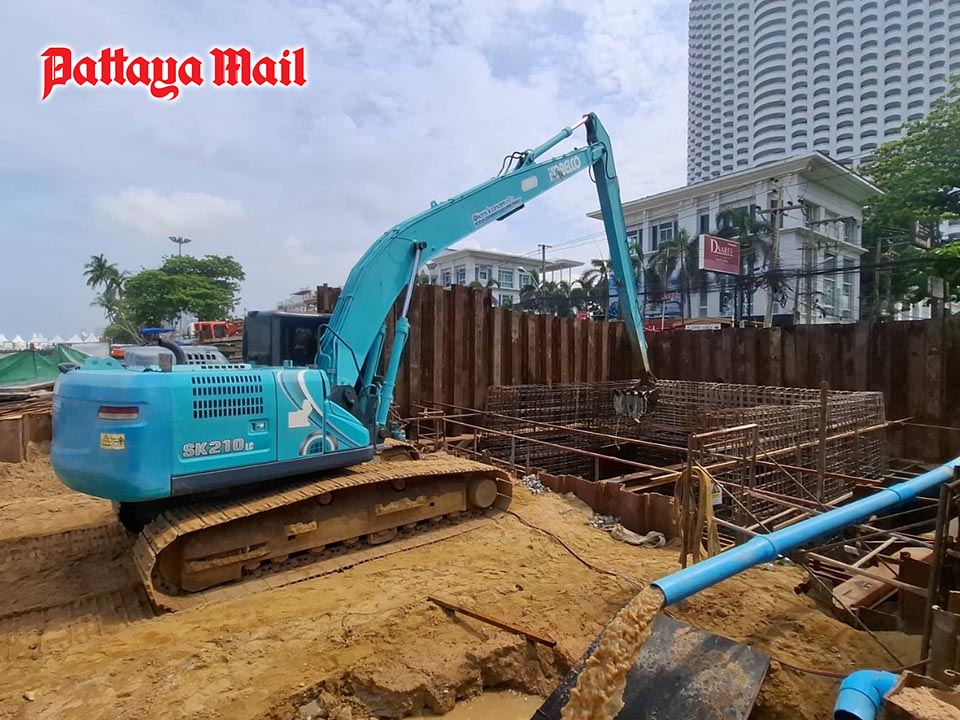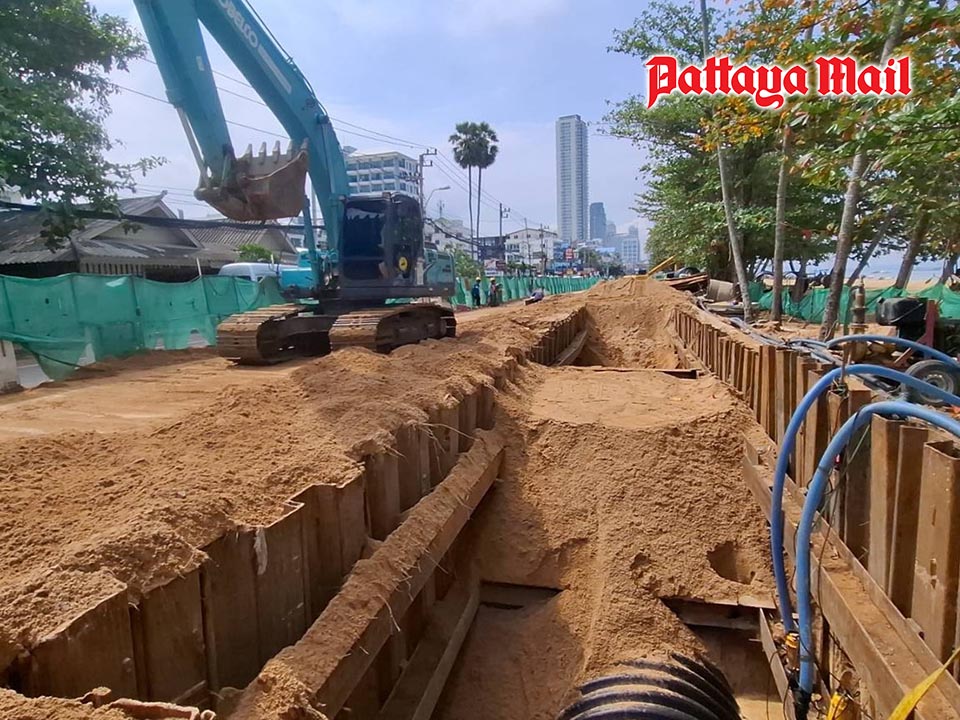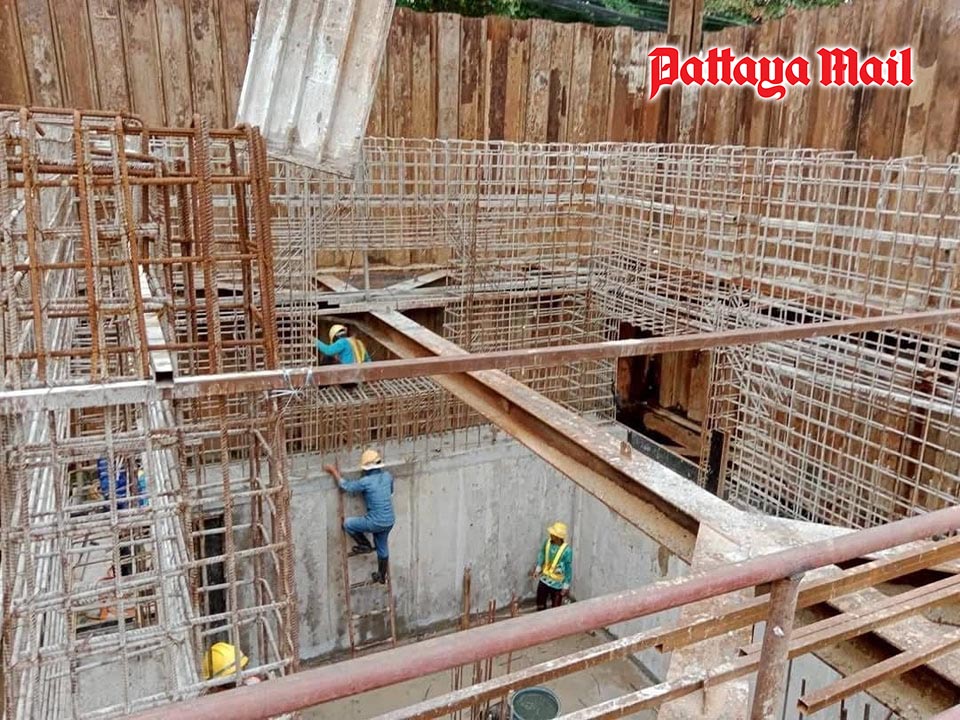
PATTAYA, Thailand – Pattaya City is pushing ahead with its bold “Neo Pattaya” vision, with Mayor Poramet Ngampichet or ‘Mayor Beer’ closely inspecting the latest progress on the Jomtien Beachfront Landscape Improvement Project. Aiming to create a more organized and tourist-friendly environment, the project is expected to be completed by the end of 2025.
Among the key upgrades is a major expansion of public parking—boosting capacity from just over 300 spaces to between 700 and 800. The sidewalks are also being redesigned for smoother pedestrian access, while additional street lighting will be installed to improve nighttime safety.
One of the most ambitious aspects of the project is the installation of a new large-scale drainage system. Giant drainage pipes measuring 1.5 to 2 meters in diameter are being laid along the beachfront to channel stormwater into the sea near D Varee Jomtien Beach Hotel. A major water catchment pit—8 meters wide, 8 meters long, and 7 meters deep—is currently under construction near the SCB Bank section of the beach. This will serve as a holding point to collect water before it is discharged into the ocean.
However, while the city touts the project as a big win for public infrastructure, residents are divided in their opinions. Some praise the improvements, saying they are long overdue—especially the additional parking, which has long been a problem during events. Others express concerns about narrow sidewalks in some sections, illegal parking, one-way traffic flow, and the discharge of untreated wastewater directly into the sea.

“How long will this last?” one resident commented. Another noted, “Don’t make the sidewalks as narrow as those at Lan Pho Market.” Concerns about untreated sewage were also raised: “Why dump wastewater into the sea without treatment? There’s a budget—use it to help the environment instead of damaging it.”
Some commenters even questioned whether the redevelopment should extend further into Na Jomtien, given that it’s all part of the same road and tourism zone. Others added practical concerns, such as stray dogs, hourly parking fees, and better coordination between utility departments to avoid repeated digging and patchwork road repairs.
Despite the criticism, many locals expressed cautious optimism that the improvements will benefit both tourists and residents—if completed and maintained properly.
#BetterPattaya aims to transform the city into a cleaner, more organized destination. Now, the challenge lies not only in completing construction but in listening to local feedback and ensuring long-term maintenance and environmental responsibility.












